Lahore, the city of vibrant culture and rich history, is home to some of the most stunning landmarks that speak volumes about its past. Among the city’s finest jewels is the Badshahi Masjid, a magnificent structure that stands as a witness to the glory of the Mughal Empire.
With its vast courtyard, stunning red sandstone architecture, and intricate designs, Badshahi Masjid is more than just a mosque; it is one of the best places to visit in Lahore, because of its history that continues to captivate visitors from all over the world.
As a proud Lahori and a photographer who has had the privilege of capturing this iconic landmark, I can say that Badshahi Mosque never fails to leave me in awe. Every visit to this majestic mosque, whether in the early morning sunlight or under the glow of the setting sun, reminds me of the richness of Lahore’s Mughal heritage. If you’re planning a trip to Lahore, this is one place that should definitely be on your list.
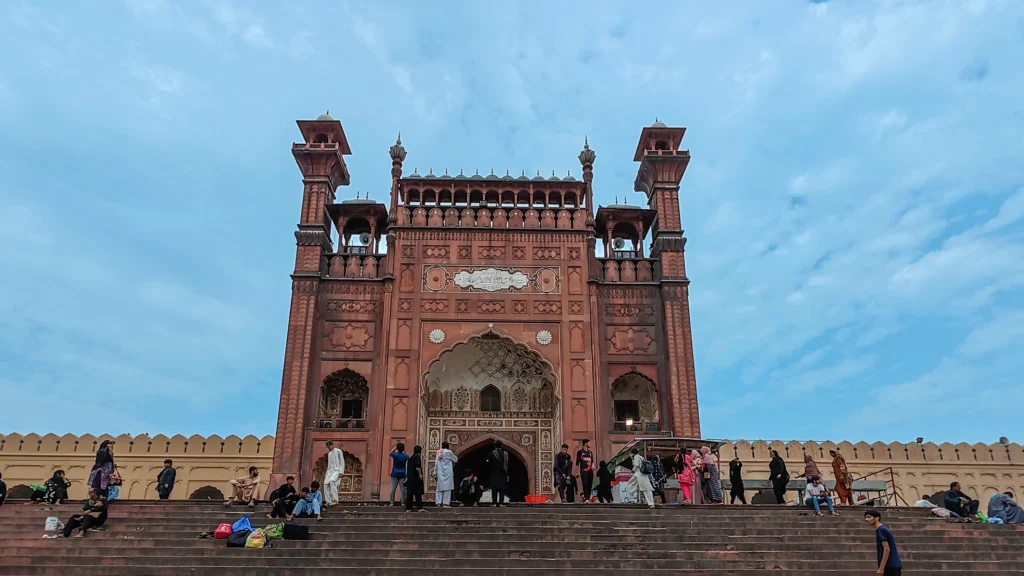
A Brief History of Badshahi Mosque
Badshahi Masjid was built in 1673 by the Mughal Emperor Aurangzeb, during a time when the Mughal Empire was at its peak. The mosque is considered one of the largest mosques in the world, and its construction was a remarkable feat of architectural design and engineering for its time.
The architecture of Badshahi Masjid, Lahore is a stunning example of Mughal design, blending elements of Islamic, Persian, Ottoman, and Indian architecture. The mosque’s imposing structure, vast prayer hall, and intricate marble inlay make it one of the most beautiful mosques in the world. Over the years, the mosque has seen multiple renovations, but it still retains the charm and majesty of its original design.

Architectural Beauty and Design
As soon as you set foot into Badshahi Mosque, the first thing that strikes you is its immense scale. The mosque’s prayer hall can accommodate thousands of worshippers, and the large central courtyard can hold even more, making it one of the largest mosques in the world by capacity.
Its towering minarets, which stand 176 feet tall, is the first thing you see if you enter Lahore from Ravi bridge, symbolizing the strength and majesty of the Mughal Empire.
The mosque is built with stunning red sandstone, giving it a rich, earthy appearance, which contrasts beautifully with the white marble used for the domes and floors. The mosque’s design is a perfect blend of beauty and function. The arches and intricate carvings that adorn the mosque’s walls tell the stories of the Mughal era, with Islamic calligraphy and motifs etched into every surface. The domes are adorned with floral designs and are framed by a combination of Islamic and Persian-style elements, creating a breathtaking visual appeal.
The central courtyard of the mosque, outside the main building, is an architectural marvel, with its perfect symmetry and design. It is bordered by lush green gardens and a fountain in the center that reflect the beauty, providing a peaceful space for visitors to relax. Tomb of Pakistan’s National Poet Dr. Allama Muhamad Iqbal is also located beside this central courtyard.
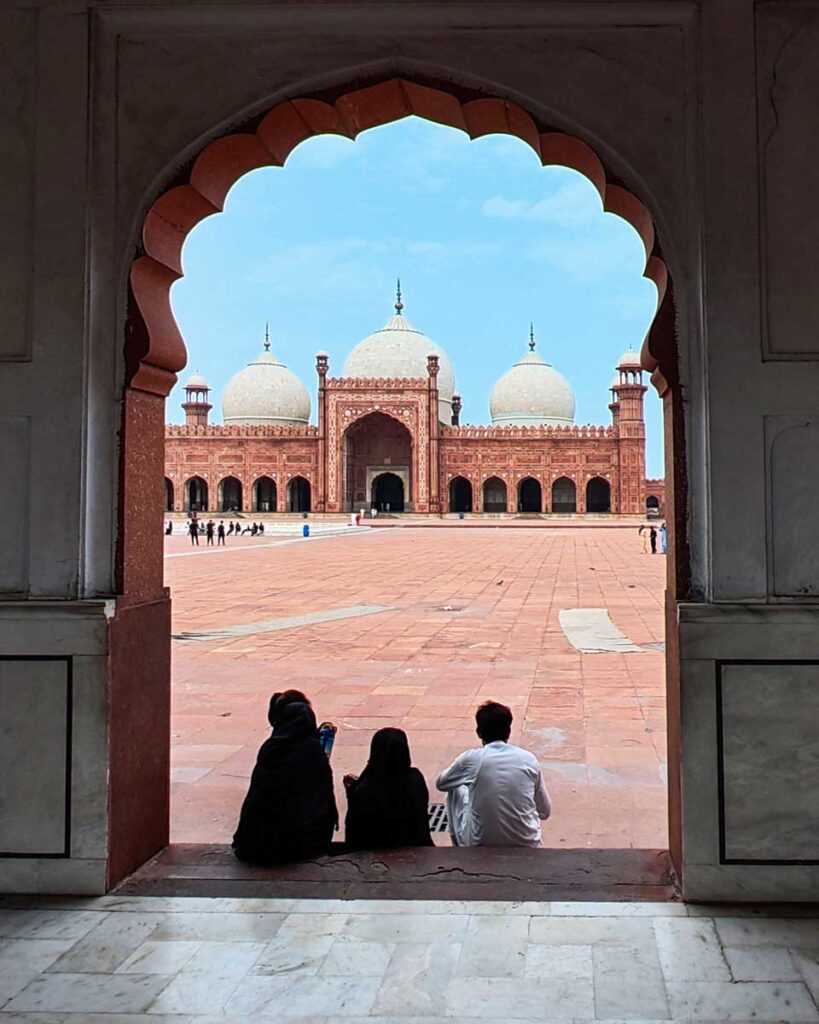
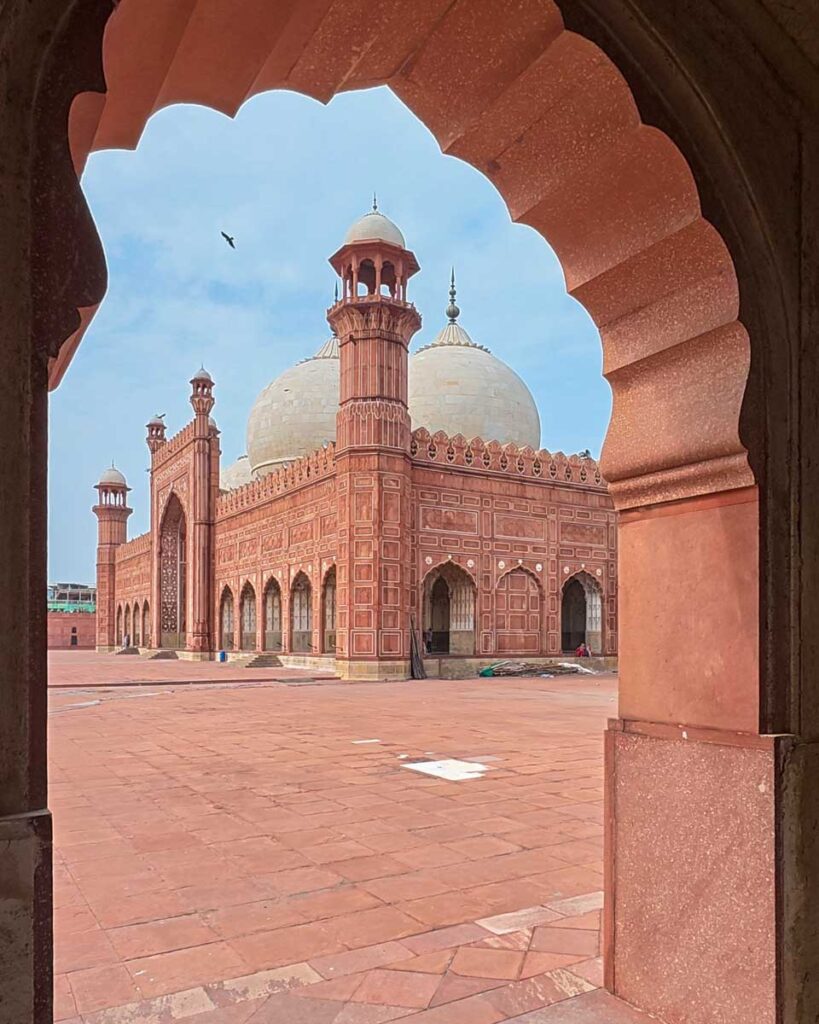
Cultural and Religious Significance
Apart from its architectural splendor, Badshahi Mosque holds great cultural and religious significance for the people of Lahore and Pakistan. For centuries, it has been a center for Islamic worship and a symbol of Lahore’s religious heritage.
The mosque’s historical significance extends beyond its religious importance; it’s also a cultural hub, where visitors come not just for spiritual reasons but to admire its architecture and learn about the history of the Mughal era.
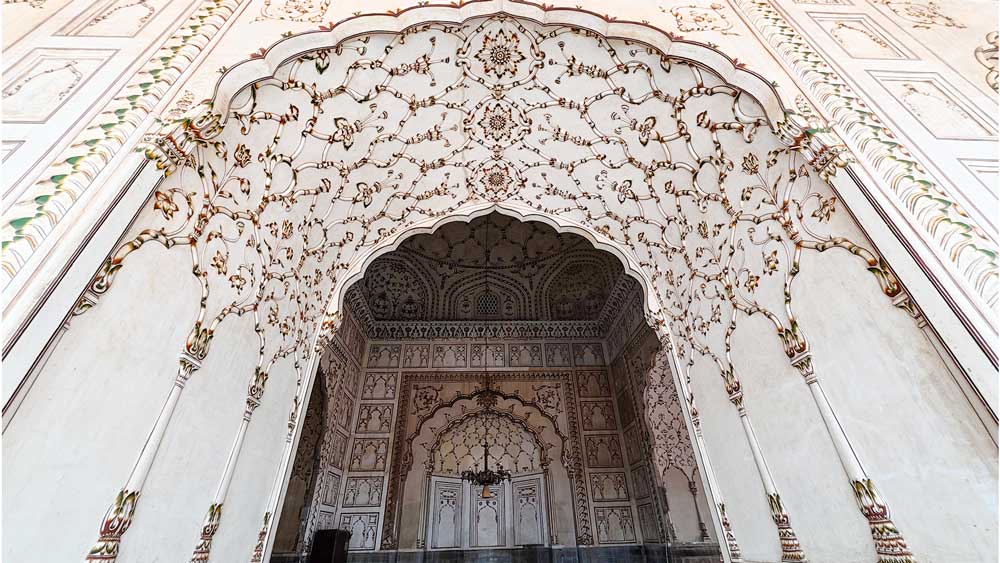
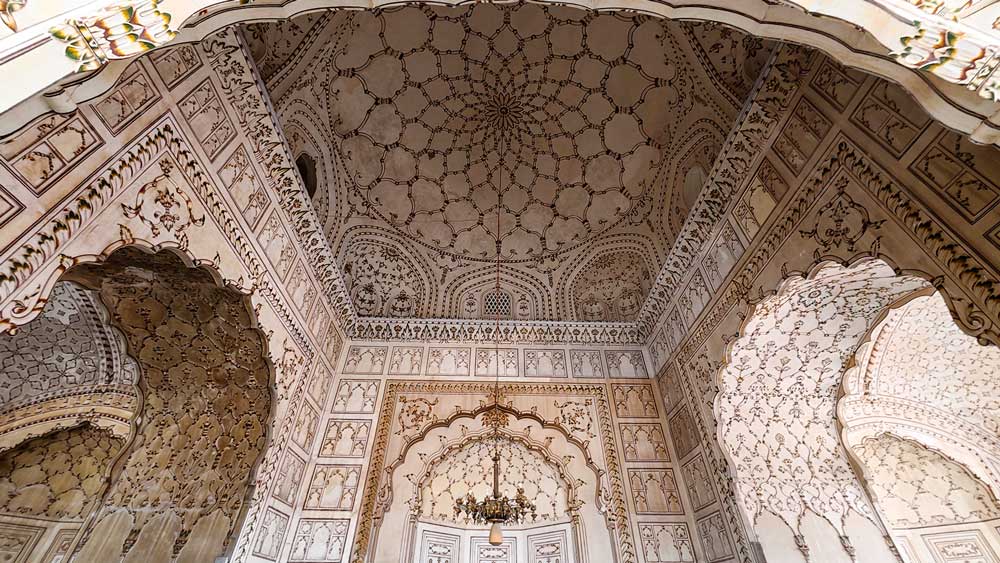

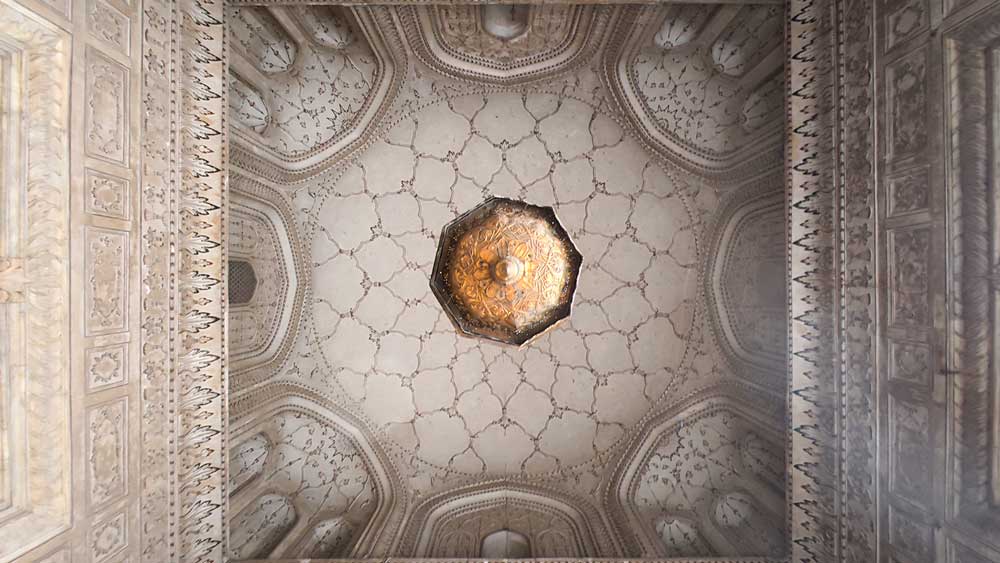
Visiting Badshahi Mosque: What to Expect
Badshahi Masjid is one of Lahore’s top tourist attractions. Whether you are a history enthusiast, a photographer, or someone looking for a peaceful place to reflect, this mosque has something to offer.
The mosque’s grandiosity makes it a photographer’s dream. Whether you are capturing the grandeur of the mosque from the outside or photographing the intricate details of the interior, every corner of Badshahi Masjid offers a new perspective to admire.
As soon as you walk through the gate, look to your right—just beyond the entrance steps, you’ll find a staircase leading to a small museum (also known as Tabarukat Gallery), and the historic Qur’an gallery. The museum preserves sacred relics associated with Prophet Muhammad (PBUH) and possessions linked to Hazrat Ali (RA), Hazrat Fatima (RA), Imam Hasan, Imam Husain, and other esteemed personalities. The collection also features rare hand-written Qur’ans, some intricately adorned with gold and silver, along with other precious Islamic artifacts.
Additionally, Badshahi Mosque is located near other important landmarks, such as Lahore Fort and Iqbal Park, which makes it a perfect spot to visit along with these historical sites. It’s an area rich in history and culture, offering visitors a comprehensive experience of Lahore’s Mughal past.
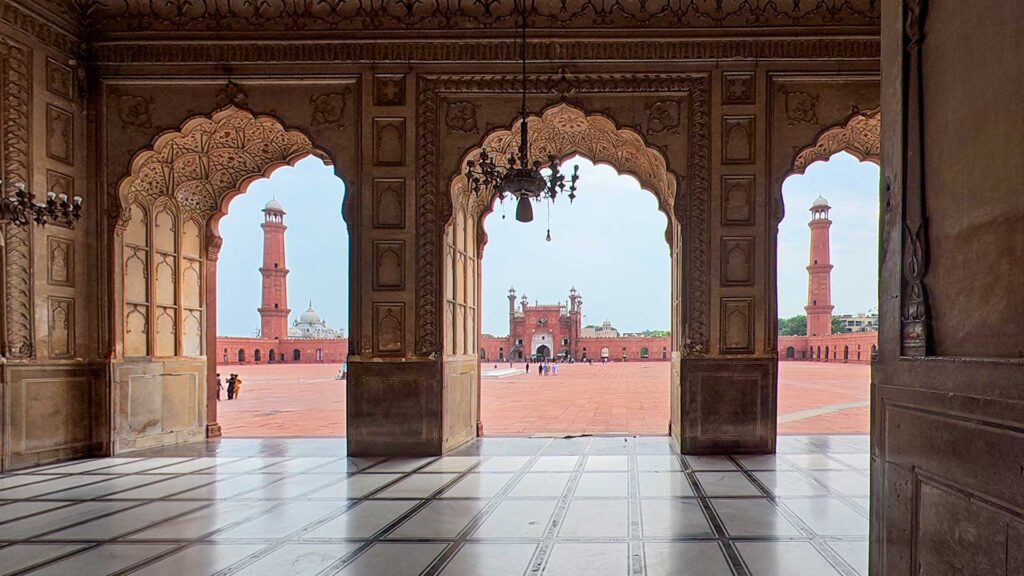
Best Time to Visit Badshahi Mosque
The best time to visit Badshahi Masjid is during the pleasant season, from October to March, when the weather in Lahore is pleasant and ideal for sightseeing.
During Ramadan, Badshahi Mosque becomes especially vibrant, with thousands of worshippers gathering for prayers. This time of year offers a unique opportunity to witness the spiritual energy and cultural significance of the mosque.
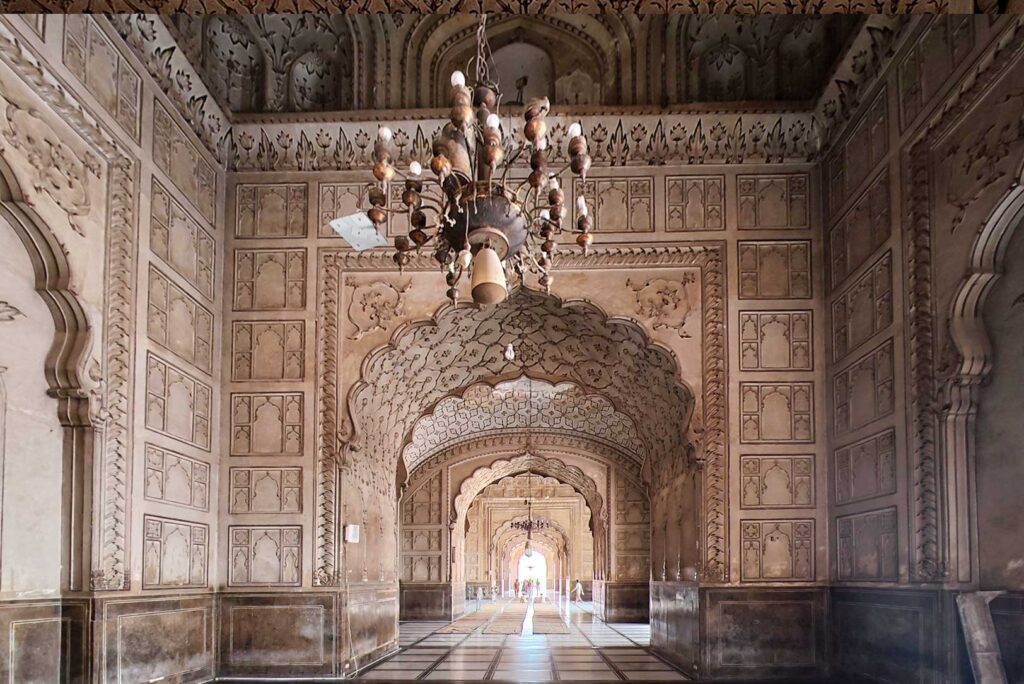
Conclusion
Badshahi Masjid, Lahore is not just a building; it is a symbol of Lahore’s rich history, architectural brilliance, and religious significance. From its majestic red sandstone structure to its intricate Islamic carvings and Mughal design, the mosque stands as a testament to the grandeur of the Mughal Empire. Whether you’re exploring its architectural beauty, capturing its details through your lens, or simply reflecting on its religious importance, Badshahi Masjid offers an experience like no other.
If you are ever in Lahore, make sure to visit this breathtaking mosque. It’s a place where history comes alive, and where you can truly appreciate the magnificence of Lahore’s Mughal heritage.
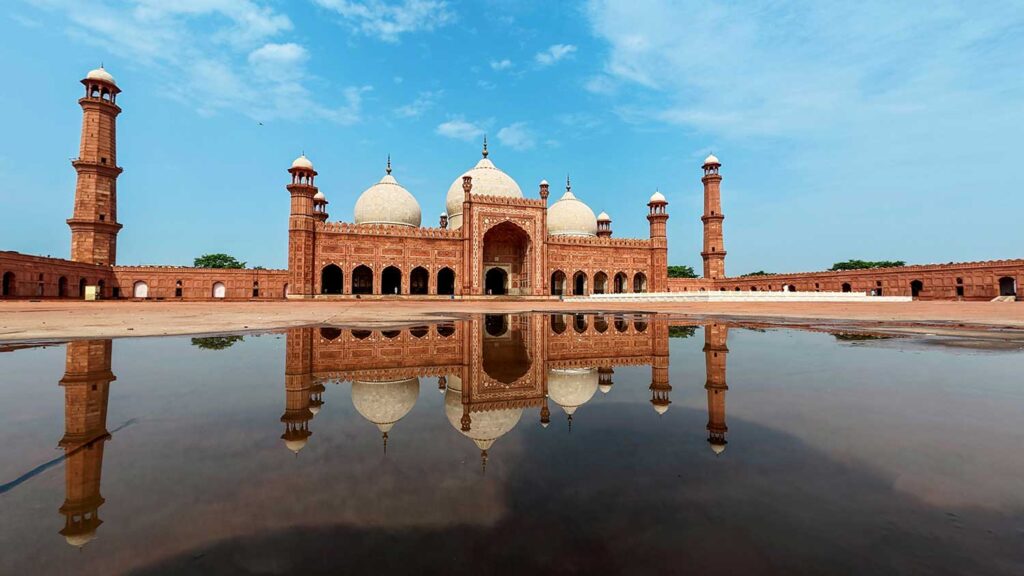



3 thoughts on “Badshahi Masjid, Lahore – A Majestic Symbol of Mughal Era”
Pingback: Top 10 Places to Visit in Lahore - Best Tourist Attractions - Kashif's Art
Pingback: Lahore Fort (Shahi Qila) – Exploring the Mughal Glory of Lahore - Kashif's Art
Pingback: Minar e Pakistan, Lahore-A Monument of Pakistan's independence - Kashif's Art